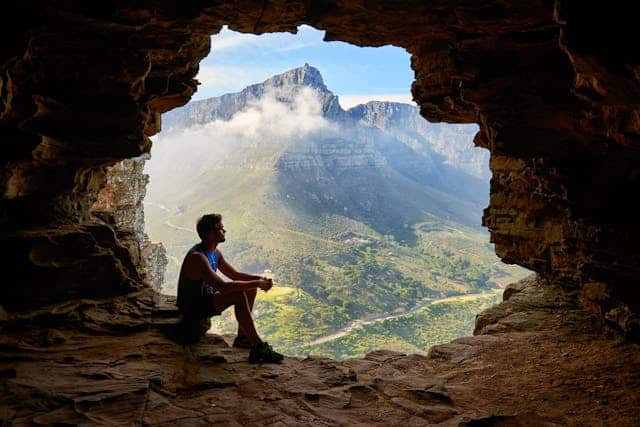What precautions should you take when exploring caves near your UK campsite?

Camping in the UK provides a unique opportunity to commune with nature, explore the great outdoors, and delve into the country's rich geographical features. One such feature that you may encounter during your camping trip is caves. Caves can serve as an exciting detour on your adventure, providing an exhilarating exploration experience that you won't soon forget. However, they do come with their own set of risks and safety considerations. This article will guide you through everything you need to know when planning a caving expedition, from the necessary safety precautions to the equipment you should bring along.
Understanding the risks of caving
Before venturing into any cave, it's crucial to understand the potential risks involved. Caving, also known as spelunking, can be a thrilling adventure. However, it must be undertaken with the necessary precautions to ensure your safety and that of your group.
Avez-vous vu cela : How do you handle emergency medical situations while camping in less accessible areas of the UK?
Caves can be unstable and prone to sudden collapses. They are often dark, slippery, and filled with uneven surfaces that can lead to falls and injuries. Sharp stalagmites and stalactites are also common in caves and can cause serious harm if you're not careful. Furthermore, caves can be home to various wildlife like bats, which can carry diseases. Lastly, getting lost in an extensive cave system is a real risk and can lead to panic and disorientation.
In the face of these potential dangers, caving should never be taken lightly. Instead, it should be approached with a healthy respect for the cave's natural environment and an understanding of the safety measures needed.
A lire également : What are the challenges of using biodegradable camping products in the UK and how to overcome them?
Preparing for your expedition
Preparation is a key aspect of any successful expedition, and your caving adventure is no different. From the right attire to necessary equipment, ensuring you are well-prepared will go a long way in guaranteeing a safe and enjoyable caving experience.
Keep in mind that caves have unique climates. They are often cooler than the outside temperature and can get quite humid. This means you'll need to dress appropriately, wearing warm, breathable clothing and sturdy, waterproof footwear. A helmet with a reliable light source is also crucial as caves are naturally dark.
As for your equipment, a reliable map or guide to the cave system you'll be exploring is vital. Additionally, bring along a compass or a GPS device to help with navigation. Rope and climbing gear might be necessary, depending on the cave's structure. Don't forget a first aid kit for any minor injuries that might occur.
Remember, the key to a successful expedition lies in preparation. Doing your research and equipping yourself accordingly can make the difference between a thrilling adventure and a dangerous ordeal.
Sticking to the rules
While it can be tempting to go off the beaten path when exploring a cave, it's essential to stick to the rules set out by cave management or local authorities. These rules are not there to limit your adventure but to ensure your safety and the preservation of the cave's ecosystem.
Avoid disturbing the wildlife or touching the cave formations. Not only can this harm the delicate balance of the cave ecosystem, but it can also pose a safety risk. For example, touching a stalactite or stalagmite can cause it to break, leading to potential injury.
Always follow marked paths and avoid straying into uncharted areas. It's easy to get lost in a cave, especially when you're inexperienced or unfamiliar with the terrain. Always keep your group together and establish a way to communicate in case someone gets separated.
Taking a guided tour
If you're not an experienced caver, it's a good idea to consider taking a guided tour. This is a safe and informative way to explore a cave, as you'll be led by a knowledgeable guide who is familiar with the cave system.
Guided tours offer an added layer of safety as the guides are trained in first aid and rescue procedures. They are also well-versed in the cave's history, geology, and wildlife, providing you with a rich and educational experience.
Moreover, a guided tour eliminates the hassle of navigation and equipment preparation, as all of these are typically provided. You can focus on the experience itself, immersively exploring the cave's chambers and formations.
Considering the weather condition
Lastly, it's essential to consider the weather condition before embarking on your caving expedition. This is because heavy rain can lead to flooding in caves, making them dangerous and inaccessible.
Always check the local weather forecast before setting off and postpone your trip if there's a high chance of rain. Even if the weather seems clear, remember that conditions can change rapidly, and it's better to be safe than sorry.
Caving can be a thrilling, educational and unforgettable part of your camping trip. However, remember that the safety of yourself and your group should always come first. By following these precautions, you can ensure that your caving adventure is not only fun but also safe and respectful to the cave's delicate ecosystem.
Incorporating Local Cave Tours
One of the best ways to navigate through the caves while camping in the UK is to take advantage of local cave tours. Many national parks and camping sites are near caves that have organized tours. These tours, like the ones offered by Oxalis Adventure in Phong Nha, not only provide a safer way to explore caves but also offer educational insights about the geological formation and ecosystem within the caves.
The Doong Expedition, for example, is a well-known tour that takes you through the magnificent Son Doong cave. Detailed safety briefings are conducted before the adventure to ensure all participants are well-aware of the precautions. Other popular cave tours include the Hang Tien Endeavor, which takes you through the Hang Tien cave, a mesmerizing cave known for its vast chambers and unique formations.
Similarly, if you are camping in the Quang Binh region, you can take part in a tour of the Hang cave or Lan cave. The Chay Lap Farmstay also organizes cave tours near the Dong Hoi area, providing a unique experience of wild camping along with cave exploration.
All these tours are conducted under the guidance of trained professionals familiar with the terrain. Therefore, whether you are at the Hoa village or Tan Hoa, you can enjoy a safe and enriching caving experience.
Conclusion: Ensuring Safety and Enjoyment
Cave exploration, or spelunking, is an adventure that can add thrill and excitement to your camping trip. However, it is crucial to remember the potential risks associated with caving and adhere to the necessary precautions. Preparation, respect for the cave's ecosystem, and adherence to set rules are vital for a safe and enjoyable caving experience.
Local cave tours, such as those offered by Oxalis Adventure, can provide you with a safer and more educational exploration experience. These tours offer professional guidance, safety briefings, and insights into the cave's geological history, providing not just an adventure, but a learning experience.
Whether you decide to venture into the mystic chambers of the Son Doong cave, explore the vast terrain of the Hang Tien, or indulge in wild camping near the Hang cave, remember that safety should always be your top priority. As thrilling as the expedition may be, it should never compromise your safety or the integrity of the cave's delicate ecosystem.
To conclude, caving can indeed be a thrilling addition to your UK camping experience. However, it should be undertaken with careful planning, necessary precautions, and utmost respect for the environment. Keep these points in mind, and your cave exploration adventure will not only be safe but also a memorable part of your camping trip.
